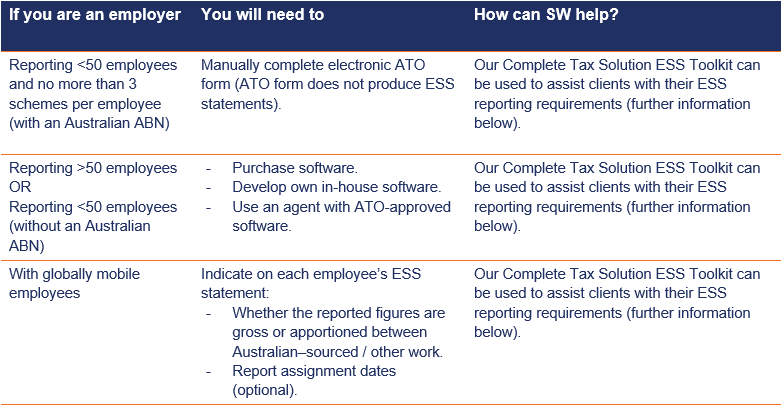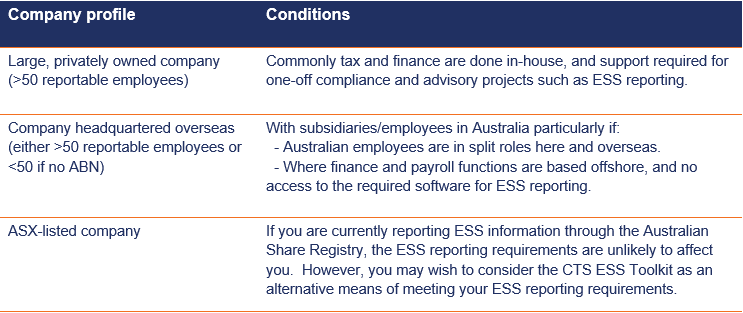
With new legislation on the horizon, large Victorian private schools traditionally exempt from payroll tax, are facing a substantial shift in operational norms.
This paradigm shift for Victorian non-profit private schools mandates proactive measures in establishing processes and templates, upskilling staff, and addressing potential challenges, ensuring a seamless transition into compliance with payroll tax obligations. While other jurisdictions have not announced any similar changes, the Victorian legislation paves the way for other jurisdictions to follow suit.
Starting from 1 July 2024, Victorian non-profit private schools with an income per student exceeding $15,000 will be subject to payroll tax. Employers must assess their own liability for payroll tax, regularly submit returns and make payments, typically monthly, to the Victorian SRO.
While navigating these changes seem supposedly straightforward, there is a good reason the SRO is one of the most active agencies with their data matching and compliance programs. Schools need to ensure that processes are well designed, to avoid common errors, minimising manual input and intervention and align with other submissions to other Government authorities (e.g. workers compensation, trainees and STP). This will also prevent overburdening existing employees with another time-consuming monthly process.
How to prepare for payroll tax changes
At a high level, schools newly subject to payroll tax will need to take steps before the obligations begin, including:
- register for payroll tax and PTX express
- review internal systems, processes and data to address risk areas such as:
- treatment of pay codes | ensure that pay codes are set up correctly to accurately disclose taxable wages in the required categories, including salaries, commissions, leave, allowances, superannuation, and more
- treatment of contractors | the relevant contract provisions extend payroll tax obligations to all service-based arrangements, with taxpayers needing to assess each non-employee worker against a series of 8 exclusions
- grouping | The payroll tax grouping provisions can be complex, and if caught can result in the reduction of available payroll tax thresholds
- data matching and investigation risks | it is not sufficient to get the taxable wage amount correct. Schools should ensure that disclosures align with other submissions to minimise the risk of investigation.
- understand their systems and available data and developing a robust monthly process, including:
- a process and documentation for data extraction and review
- a working template for calculations
- a review and lodgement process and controls
- documentation of important payroll tax positions, process and methodology.
- maintain ongoing processes for compliance with changing law and regular testing of existing processes.
How SW can help
As this is uncharted territory for many schools, our SW payroll tax experts are offering a comprehensive package to assist school finance teams get up and running with their payroll tax processes. This package includes:
- understanding the payroll systems and data, as well as the process for engaging contractors.
- working with the team to get detailed descriptions of pay codes and determine payroll tax positions (including recommendations to restructure pay codes if needed).
- designing an Excel-based model (e.g. using PowerQuery/PowerPivot) in conjunction with the school for monthly and annual payroll tax reconciliations. This template is designed to source information from raw data files (e.g. payroll reports) and produce the required breakdown for payroll tax returns with minimal manual manipulation.
- documentation of methodology and positions (including a matrix of pay codes, descriptions and payroll tax positions).
- payroll tax training for staff members including use of the model.
- assistance with the preparation of the first payroll tax return and ad hoc support for 6 months for queries that arise after handover process
- review of the first annual payroll tax reconciliation.
We offer complementary initial discussions for us to understand the school systems and processes as well as data sources as well as highlight discuss any risk areas.
Contributors
Followed by rulings in QLD and SA, the Victorian State Revenue Office and Revenue NSW have issued rulings that may subject many medical practices to payroll tax on practitioner payments processed through the practices.
The NSW and VIC Revenue Authorities have recently published harmonised revenue rulings (Revenue Rulings PTA-041) following similar rulings in QLD and SA. These rulings confirm the Revenue Authorities official position that payroll tax is likely to apply to payments made by medical practices to medical practitioners under the ‘relevant contracts’ payroll tax provisions irrespective of whether the fees under contractual arrangements are merely processed on behalf of the medical practitioner.
This ruling has far-reaching implications for medical centres, dental clinics, physiotherapy practices, radiology centres, and similar healthcare providers that have not been treating these payments as subject to payroll tax. We recommend that immediate action to assess compliance both retrospectively and on an ongoing basis as well as consider whether arrangements are optimally structured. If retrospective issues are found, employers can consider voluntary disclosure or amnesty/exemptions if available. The SW Team is here to guide you through these complex changes.
Introduction
Followed by rulings in QLD and SA, the Victorian State Revenue Office and Revenue NSW have issued rulings that may subject many medical practices to payroll tax on practitioner payments processed through the practices. We have provided links to each of the rulings below:
- NSW | PTA 041 Payroll Tax Act- Relevant Contracts – Medical Centres | Revenue NSW
- VIC | Relevant contracts – medical centres | State Revenue Office (sro.vic.gov.au)
- QLD | Public Ruling PTAQ000.6.1 Relevant contracts—medical centres – Queensland Revenue Office (qro.qld.gov.au)
- SA | PTASA003 | RevenueSA
These rulings, influenced by recent court decisions, aim to impose payroll tax on practitioner payments processed by medical practices which would not ordinarily be considered derived as income or treated as an expense when paid by the medical practices for income tax or accounting purposes. It casts a wide net, potentially impacting a broad spectrum of healthcare providers.
While it is important to recognise that the rulings are harmonised, meaning they are consistent across different jurisdictions, each jurisdiction has responded differently to the impact of the changes, with responses mainly in relation to General Practitioner (GP) medical practices. See below for details on concessions in ACT, SA, QLD and NSW.
The rulings provide clarity on the harmonised position adopted by the Revenue Authorities but also raises urgent concerns for medical practices. It applies to existing arrangements and can have retrospective effect depending on whether amnesty or an exemption is available.
Relevant contract provisions
The recent payroll tax rulings and court decisions centre around the application of the Relevant Contract provisions and understanding how these provisions work is essential for medical practices.
A relevant contract is an agreement that can be characterised as a contract for the performance of work, such as a service or contracting agreement. Prior to the recent court decisions, it was generally only payments that were directly referrable to services rendered which were treated as subject to payroll tax. This meant many medical practices may not have included payments distributed to practitioners as subject to payroll tax on the basis that patient fees were directly derived by the practitioners as income (though the collection and distribution of the patient fees was processed by the medical practice). The medical practice then earned its income from a proportion of patient fees charged by the medical practitioner as payment for administration and facility services.
In other words, the rulings and court decisions expanded the conventional understanding of the types of payments which could be subject to payroll tax.
The rulings have determined that if a medical centre engages a practitioner to practice from its premises, or if it provides patients with access to the medical services of a practitioner, a relevant contract likely exists. Payments while not derived or treated as income by the medical practice are considered taxable payments under the ‘relevant contract’ provisions.
In other words, the medical centre is deemed to be an employer, and the practitioner is deemed to be an employee, making any payments under the contract subject to payroll tax.
While the rulings have broadened the scope of what constitutes a relevant contract and the type of payments the provisions capture, certain exclusions may still apply to mitigate or eliminate payroll tax liability. The exemptions that are more likely to apply to a contract between a medical centre and a practitioner include:
- the practitioner providing services to the public generally (e.g. if the practitioner provides services to more than one medical practice)
- the practitioner performing work for no more than 90 days in a financial year
- services performed by two or more persons (e.g., a practitioner personally providing a nurse or assistant).
It’s essential for medical centres to carefully evaluate their contractual arrangements on a case-by-case basis to determine if the work performed by the medical practitioner is considered services for the practice, whether the payments are capture by the provisions and if so, whether any of these exclusions apply. Professional advice is recommended to ensure complete understanding and accurate compliance with these provisions, and whether arrangements should be re-structured or clarified on a go forward basis.
Medical centres should also consider whether the employment agent provisions may apply to the arrangement (meaning that the Relevant Contract exclusions do not apply).
It is important to note that there are a number of jurisdictions which have not issued the harmonised ruling and we briefly summarise the “state of play” in these jurisdictions:
- ACT – Has recently announced concessions for general practitioners so it is likely that a similar position is adopted
- NT and TAS – There has not been any indication in these jurisdictions as to whether a similar view will be adopted
- WA – The legislation in WA is significantly different and in a letter to the RACGP, confirmed that most General Practitioners will continue to be treated as independent contractors (i.e. not subject to payroll tax).
What concessions have been made available?
Certain concessions have been announced/offered in ACT, SA, QLD and NSW which we briefly outlined below:
- ACT – the ACT Government announced that payroll tax on payments made to General Practitioners (GP) is waived to 30 June 2023 with the compliance deadline extended to 2025. Further, an exemption to 30 June 2025 will be available for GP payments for practices which bulk bill 65 percent of all patients and have registered for MyMedicare. Applications will need to be made to the ACT Revenue Office by 29 February 2024
- SA – An amnesty is available on GP payments up to 30 June 2024 for designated medical practices that make a voluntary disclosure and register for payroll tax if necessary. Medical practices must comply with payroll tax obligations post 30 June 2024. Expressions of interest must be made by 30 September 2023
- QLD – An amnesty is available on GP payments up to 30 June 2025 for medical practices that make a voluntary disclosure prior to 30 June 2025 and register for payroll tax if necessary. Expressions of interest must be made by 29 September 2023
- NSW – the NSW Government announced that they will pause audits on medical centres for 12 months to consult with GP groups. Interest and penalties accrued will be paused.
Who is impacted?
- Medical centres not only including GPs
- Dental clinics, physiotherapy practices, radiology centres, optometrist centres
- Other allied healthcare providers contracting with medical, dental, and other health practitioners.
It should be noted that while the cases and rulings focus on the medical industry, it would not be inconceivable for the Revenue Authorities to apply the principles to other industries which rely on similar legal constructions for structuring work performed and payments. Examples could include veterinarian practices, personal trainers in commercial gyms or sports coaches, nail technicians in nail salons etc.
What is the impact?
Immediate action is required given the ruling’s retrospective and prospective application.
The impact will differ depending on whether the medical practice is a GP medical practice.
All medical practices will need to consider how their medical practitioner arrangements should be treated under payroll tax law, whether payroll tax shortfalls arise on a retrospective basis and whether an increase in the payroll tax oncost is likely on an ongoing basis. If payroll tax shortfalls do arise there is a potential for interest and penalties to accrue which can be mitigated by making voluntary disclosures.
GP medical practices should consider the various concessions that are available to reduce any payroll tax shortfalls or ongoing oncost, as well as interest and penalties. In particular, practices should ensure that applications or expressions of interest have been lodged by the due date if relevant.
How can SW help?
Medical practices must review their current agreements to assess whether they evidence a relevant contract and consider whether agreements should be updated or changed and any voluntary disclosures which may need to be made (even if amnesty applies).
There are essentially three limbs for payroll tax to apply under the Relevant Contract provisions:
- that services are provided to the medical centre
- that there is a payment for payroll tax purposes and
- whether an exclusion applies.
Each of these should be considered in the review of retrospective arrangements, but also with a view to compliance or risk mitigation on an ongoing basis.
The SW Team, with its expertise in tax law, is ready to assist you in navigating these complex changes. Our dedicated team can:
- conduct a comprehensive review of your existing agreements and structures
- provide tailored advice on compliance and potential exclusions
- work with the business to restructure arrangements to mitigate risk with ongoing payroll tax obligations
- assist with private rulings on for prospective arrangements with the SRO
- assist with voluntary disclosure if needed
- offer ongoing support to ensure alignment with the latest legal requirements.
Contact the SW Team today to schedule a consultation and ensure that your practice is prepared for these significant payroll tax implications. Our expert team is here to support you every step of the way.
ASIC has released the focus areas for 30 June 2023 reporting, highlighting the impact of uncertain market and economic conditions on reporting.
The ASIC media release on 6 June 2023 outlined its key areas of focus for this reporting season, stressing the need for directors, preparers of financial reports and auditors to evaluate the potential impact of shifting circumstances, uncertainties, and risks.
Key areas of focus
Asset values
Considerations for directors, preparers, and auditors regarding asset values include:
- impairment of non-financial assets
- appropriate valuation methods
- factors affecting property values
- expected credit losses
- asset classification
- inventory valuation
- deferred tax assets
- investments in unlisted entities.
Provisions
Financial statement preparers need to provide sufficiently for potential expenses or obligations relating to onerous or loss-making contracts, property leases, restoring mining or other sites, providing financial guarantees, and making changes to your business.
Solvency and going concern assessments
In a growing interest rate market, debt can become very expensive to manage and covenant breaches more common resulting in solvency and going concern issues. Inflation is also an issue for many entities to manage. Our advice is to ensure that projections are reasonable and realistic and going concern disclosures are made with sufficient detail in the financial statements if there are material uncertainties surrounding going concern.
Events occurring after year end and before completing the financial report
It is important to review any events that happen between the end of the year and the completion of the financial report. This review should determine if these events have any impact on the assets, liabilities, income, or expenses at the end of the year or if they involve new conditions that need to be disclosed. Covenant breaches post year-end need to be identified. Adjustments or disclosures relating to relevant events post-year end is important to investors and other stakeholders. Omission of such material information could be problematic, in particular in an uncertain economic environment.
Disclosures in the financial report and Operating and Financial Review (OFR)
Disclosure of information is important to investors and other stakeholders. Directors must ensure disclosures are specific to the entity’s circumstances and highlight changes from the previous period. Address uncertainties, classify assets and liabilities correctly, and explain the impact of economic conditions in the Operating and Financial Review. Discuss risks, strategies, and consider climate change and cybersecurity risks. Present non-IFRS profit measures accurately and disclose significant developments since end of last year in half-year reports.
Impact of uncertainty
Market and economic conditions are particularly uncertain this year, which impacts financial reporting in areas where significant estimates and judgements are required in the financial statements.
The impact will be different depending on industry, geography, markets, suppliers and customers but very few industries are not facing significant uncertainty.
Directors and financial statement preparers should take into account what the entity’s current performance is, what the future holds and how those factors impact on values of assets, provisions and business strategies.
“We have seen ASIC take more action against Directors in recent times and recommend that Directors are across all the significant estimates and judgements in their financial reports, including ensuring material disclosures are appropriate, complete and accurate. In an uncertain economic environment, more estimates and judgements are required in financial reporting particularly when incorporating forward-looking information,”
Rene Muller, Partner SW Assurance and Advisory Division
The particular market conditions highlighted by ASIC as those representing changing circumstances, uncertainties and risks are:
- availability of skilled staff and expertise, which can impact on revenue and costs
- impact of rising interest rates on future cash flows and on discount rates used in valuing assets and liabilities
- inflationary impacts that may differ between costs and income
- increases in energy and oil prices
- geopolitical risks, including the Ukraine/Russia conflict
- impacts of climate change, climate related events and transitioning to ‘net zero’
- technological changes and innovation
- COVID-19 conditions and restrictions during the reporting period
- changes in customer preferences and online purchasing trends
- discontinuation of financial and other support from governments, lenders and lessors
- legislative and regulatory changes
- other economic and market developments.
How SW can help
Our team of audit and assurance experts are fully informed of the ASIC focus areas and can assist with providing guidance for your year-end financial reporting, as well as keeping you abreast of developments from an Australian reporting context.
Reach out to our key contacts here for a conversation.
Key contacts
The International Sustainability Standards Board (ISSB) has issued the first two sustainability accounting standards, with implementation in Australia yet to be finalised.
The ISSB has issued two standards focusing on material risks and opportunities related to sustainability (IFRS S1) and climate (IFRS S2). The new standards are effective for reporting periods beginning on or after 1 January 2024 however, each jurisdiction may choose its own effective date and which entities would be mandated to comply.
In Australia, Treasury received a range of responses to its first consultation paper regarding rollout for mandatory climate disclosure, and the majority of stakeholders agreed that a phased approach should be implemented.
Treasury has now released a second consultation paper, open until 21 July 2023, seeking consultation on several issues such as the timing of the rollout and covered entities, seeking input whether the standards should initially apply to listed entities and what an appropriate entity size would be. Other matters under consultation include what the legislative framework in Australia would be and who entities would be reporting to.
Proposed rollout
Treasury’s proposed roadmap for mandatory adoption can be summarised as follows:
Group 1 | 2024-25
Entities preparing accounts in accordance with the Corporations Act (chapter 2M) and meets at least 2 of the following:
- over 500 employees
- consolidated gross assets of $1 billion or more
- consolidated revenue of $500 million or more.
AND Entities preparing accounts in accordance with the Corporations Act (chapter 2M) that are a ‘controlling corporation’ under the NGER Act and meet the NGER publication threshold.
Group 2 | 2026-27
Entities preparing accounts in accordance with the Corporations Act (chapter 2M) and meets at least 2 of the following:
- over 250 employees
- consolidated gross assets at end of company’s financial year and any controlled entities is $500 million or more
- consolidated revenue for company’s financial year and any controlled entities is $200 million or more.
AND Entities preparing accounts in accordance with the Corporations Act (chapter 2M) that are a ‘controlling corporation’ under the NGER Act and meet the NGER publication threshold.
Group 3 | 2027-28
Entities preparing accounts in accordance with the Corporations Act (chapter 2M) and meets at least 2 of the following:
- over 100 employees
- consolidated gross assets at the end of the company’s financial year and controlled entities is $25 million or more
- consolidated revenue for the company’s financial and any controlled entities it $50 million or more.
AND Entities preparing accounts in accordance with the Corporations Act (chapter 2M) that are a ‘controlling corporation’ under the NGER Act.
Voluntary reporting disclosure
Whilst currently not mandatory, many organisations will choose to early adopt, particularly if they know their investors or other stakeholders will find the information relevant. This includes entities in industries that are expected to be significantly impacted by climate change and/or sustainability related matters.
SW highly recommends that entities consider the adequacy of systems and processes to capture sustainability and climate related information.
How SW can help
Our team of audit and assurance experts are fully informed of the requirements of the sustainability accounting standards and can assist with providing guidance for your business, as well as keeping you abreast of developments from an Australian reporting context.
Reach out to our key contacts here for a conversation.
Contributors
Following consultation to the Exposure Draft legislation earlier this year, the Government has now introduced the Treasury Laws Amendment (Making Multinationals Pay Their Fair Share – Integrity and Transparency) Bill 2023 (the Bill) which details significant reforms to the thin capitalisation regime.
Introduced into Parliament on 22 June 2023, the Bill is in line with the Government’s commitment to address tax avoidance practices of multinational enterprises and streamline with (OECD) best practice guidelines. There are some important distinctions from the Exposure Draft legislation, which SW detailed here in March.
From 1 July 2023, the new proposed thin cap provisions will replace the existing rules and limit the amount of interest deductions for certain entities. The Bill has been referred to the Senate Economics Legislation Committee for review, which will complete on 31 August 2023. This means that final legislation may not be released before September 2023.
Who do the new thin cap rules apply to?
The new regime applies to:
- foreign controlled taxpayers and taxpayers with foreign operations. These remain broadly unchanged from the existing rules
- only applies to general investors and, in part, to financial entities
- certain exemptions will continue to apply – including the $2 million (debt deduction) de minimis exemption.
What are the new tests?
The new regime’s safe harbour will be broadly based on the taxpayer’s current year taxable income – instead of the current safe harbour which is based on a taxpayer’s balance sheet.
The new safe harbour will be known as the Fixed Ratio Test (FRT). The FRT will limit interest deductions to 30% of a taxpayers Tax EBITDA. The Tax EBITDA will broadly be calculated as a taxpayer’s taxable income adjusted for interest deductions, tax depreciation and certain distributions received. Any non-deductible interest can be carried forward for 15 years.
Two other tests will be available:
- The Group Ratio Test (broadly replacing the worldwide gearing test)
- The Third Party Debt Test (broadly replacing the arm’s length debt test).
The Group Ratio Test will apply to disallow interest deductions by applying a group ratio to the taxpayer’s tax EBITDA – instead of the 30% FRT. The group ratio is calculated by applying a complex formula broadly equal to the net third party interest expense of the global group divided by the Group EBITDA.
As the name suggests, the Third Party debt test will only apply to debt issued to external third parties – meaning taxpayers may no longer be able to deduct interest issued to related parties even where third parties would have loaned funds on the same terms. There are exceptions in relation to the use of Australian conduit financing entities.
Notable changes from the Exposure Draft legislation
Some notable changes in the Bill that has been added, or else removed from the Exposure Draft legislation, include:
- Changes to the calculation of tax EBITDA, particularly in relation to:
- excluding dividends and franking credits
- excluding trust distributions and partnership distributions from associate entities
- adding back all amounts under Division 40 and Division 43 except to the extent that the amounts are immediately deductible and
- removing the add back for prior year tax losses that was in the original Exposure Draft.
- Removal from the proposed legislation of changes to section 25-90 of the ITAA 1997 (about deductions for debt deductions incurred to derive foreign non-assessable non-exempt income from non-portfolio investments) At this stage, no announcement has been made as to the future of this controversial proposed change.
- The choice to apply one of the two new alternative tests is revocable, although a taxpayer will need to apply to the Commissioner to have a choice revoked.
- Removal of limitation to apply the third-party debt test where all associate entities had not made the choice. This has been replaced with a deemed choice for members of an obligor group.
- Addition of new Subdivision 820-EAA to disallow debt deductions to the extent they are created under debt creation schemes without commercial justification.
What is the detail of the rules?
A more detailed analysis of the Bill is contained in our Technical Briefing, linked below. We encourage you to talk to the SW team to understand these changes further.
Application Date
The new legislation is set to apply to income years beginning on or after 1 July 2023.
How should taxpayers prepare?
We recommend that taxpayers subject to the thin capitalisation regime review their existing arrangements having regard to the new Bill as a high priority, noting that the proposed date of effect is 1 July 2023. Whilst we hope that common sense will prevail and technical amendments will be made to ensure that the 3rd party debt test can be used by business, the Bill is predominantly based on the OECD guidance.
How can SW help?
Our SW team can assist with:
- modelling the potential impact of the new rules on your debt deductions
- assessing the feasibility of restructuring any existing financing arrangements for your group
- considering whether one of the alternative tests would be applicable and beneficial to your circumstances.
Reach out to your SW advisor for support from our specialist tax team.
Contributors
The 2023/24 State Budget delivered by the Victorian Government seeks to repay COVID-19 debt through taxing big business and property investors. Temporary levies and job cuts are central to the 10-year fiscal repair plan which are set to impact business and employment.
Key takeaways
- Larger businesses and landlords will have to pay additional taxes to help the Government repay the COVID debt
- The Government continues to invest in education and healthcare as this remains a key focus
- Certain infrastructure projects have been paused such as the Melbourne Airport Link. However, the Government continues to invest in road upgrades and railway networks.
What does the State Budget mean for you?
Contributors
For companies with R&D activities, applications for Advance and Overseas Findings must be lodged before the end of the income year. For companies with a June year-end, this means the Application deadline for activities conducted in the 2023 income year is 30 June 2023.
What is an Advance Finding?
An Advance Finding is a decision about the eligibility of R&D activities for the R&D Tax Incentive. A positive Advance Finding can cover R&D activities for up to three years. While eligible Australian R&D activities can be registered with or without an Advance Finding, any R&D activities conducted overseas must have an Advance Overseas Finding in place before an R&D Tax Offset for these activities can be claimed.
In order to register and claim the R&D Tax Offset for activities conducted overseas a company must first apply for an Overseas Finding.
The Overseas Finding process
To receive an Overseas Finding for an overseas R&D activity, the company must demonstrate that it meets the following 4 conditions:
- The overseas R&D activity must be an R&D activity (meet the R&D Tax Incentive requirements for being either a core R&D activity or a supporting R&D activity).
- There must be a scientific link to an Australian core R&D activity and the Australian core R&D activity can’t be completed without conducting the overseas activity.
- The overseas R&D activity must not be able to be conducted in Australia or its external Territories.
- The costs of overseas R&D activities must be less than the costs of related R&D activities undertaken solely in Australia.
When should I start the process?
Applications for Advance and Overseas Findings must be lodged before the end of the income year of the registrant. Late applications cannot be accepted under any circumstances.
Advance and Overseas Finding Applications can be complex. If a company considers an Advance and Overseas Finding Application, the process should be started as soon as possible and well before the Application deadline on 30 June 2023.
How can SW help?
Our R&D Tax Incentive experts have extensive experience in preparing Advance and Overseas Finding Applications and assist in:
- determining the eligibility of overseas activities
- providing guidance regarding the required evidence to demonstrate why an activity can’t be solely conducted in Australia
- the preparation of detailed Advance and Overseas Finding Applications
- the finding process post-lodgement of the Application.
Contributors
Thomas Demel, Senior Manager R&D Tax and Government Incentives Tax
Lachlan Murfett, Assistant R&D Tax and Government Incentives Tax
The ATO have upcoming reporting obligations affecting those offering employee share schemes (ESS). Find out how the CTS ESS Toolkit, our ATO-approved software can simplify your reporting obligations.
ATO reporting obligations
The Australian Taxation Office (ATO) have reporting obligations in place, affecting employers who issue shares or share options to their employees. The deadlines to comply with the reporting requirements are:
- ESS statements are due to be issued to employees by 14 July 2023
- ATO reports are due for lodgement with ATO by 14 August 2023.
What do the ATO reporting obligations mean for you?

Please note that for all ESS interests (new and existing) that are subject to deferred taxation with the deferred taxing point on or after 1 July 2022, cessation of employment has been removed as a deferred taxing point.
Our innovation solution | CTS ESS Toolkit
SW has developed the ‘Complete Tax Solutions Employee Share Scheme’ Toolkit (CTS ESS Toolkit), an ATO-approved and compliant software which enables employers to simplify their online annual employee share scheme reporting obligations.
Using the CTS ESS Toolkit, SW have been successfully working with businesses to meet their ESS lodgement requirements since electronic reporting began. We are one of only a handful of providers to have passed ATO testing and have ATO approval for our specialised software. CTS ESS Toolkit is designed to help you meet the ATO’s ESS reporting requirements.
The table below outlines the types of companies that are most likely to benefit from using the CTS ESS Toolkit.

Introduction of ‘New Division’ into Corporations Act 2001 (Cth)
Please note any offer of ESS interests to employees made under any existing share plans or new plans should consider whether offers will comply with the recently introduced Division 1A of the Corporations Act 2001 (Cth). The ‘New Division’ overhauls the existing ESS regulatory framework for unlisted and listed companies and updates the legislative framework for entities seeking disclosure relief.
Next steps
Time is limited to make the necessary arrangements to comply with the ESS reporting requirements. The ATO is particularly keen to ensure corporates are compliant and provide timely and accurate reporting.
Now is the time to ensure your business is not left behind and that everything is ready for reporting season. We can provide a fully outsourced service or license our software; whichever you prefer.
If you would like to discuss how to comply with the ATO reporting requirements or learn more about how our ESS Toolkit will help you, please contact either Sam Morris or Justin Batticciotto on the details below.
Contacts
Justin Batticciotto
With increased globalisation and digitalisation creating growing concern about tax avoidance by multinationals, the OECD Two-Pillar approach aims to address international corporate tax challenges.
In the 2023-24 Budget, the Government announced the implementation of a 15 per cent global minimum tax and domestic minimum tax, key aspects of Pillar Two of the OECD/G20 Two-Pillar Solution to address the tax challenges arising from the digitalisation of the economy.
The Two-Pillar Solution will ensure that multinational enterprises (MNEs) will be subject to a minimum effective tax rate of 15%, and will re-allocate profit of the largest and most profitable MNEs to countries worldwide. Under the OECD, 136 countries and jurisdictions have agreed to implement the new framework and proposed reforms.
After years of joint development, members of the G20/Organization for Economic Co-operation and Development (OECD) Inclusive Framework (IF) on Base Erosion and Profit Shifting (BEPS) (the Inclusive Framework) agreed on the Two-Pillar Solution to address the Tax challenges arising from the Digitalization of the Economy. Two detailed blueprints were published in October 2022 on the tax reforms for addressing the Nexus and profit allocation challenges (Pillar One) and for Global Minimum Tax (GMT) rules (Pillar Two).
Who is affected?
Pillar One: will impact multinationals with revenues that exceed EUR 20b (~AUD 30b) per annum and have profit margins in ‘excess’ of 10%.
- Exclusions apply for extractives and regulated financial services
- Treasury currently estimates that no Australian headquartered multinationals would be impacted. However Australian subsidiaries of foreign headquartered multinational groups may need to take into account any profits allocated to them in Australia.
Pillar Two: will have a far wider impact and applies to multinational groups with a global revenue of EUR 750m (~AUD 1.2b) per annum.
- The OECD Framework excludes Government entities, international organisations (e.g. World Trade Organisation), non-profit organisations, pension funds or investment funds that are ultimate parent entities of an MNE Group or any holding vehicles used by such entities, organisations or funds from the scope of Pillar Two
- The OECD Framework includes de-minimis exemptions based on the revenue and profits within particular jurisdictions
- Further breakdown on each pillar can be found below.
When does it come into effect?
There is currently no draft legislation and no specified start date. However, it is expected that:
- Pillar One: the start date is to be announced.
- Pillar Two:
- The Income Inclusion Rule which will apply for income years starting on or after 1 January 2024. This rule will apply to Australian multinationals and Australian entities which are subsidiaries of a foreign-headquartered multinational located in a jurisdiction that has not implemented this rule.
- The Undertaxed Profits Rule which will apply for income years starting on or after 1 January 2025. Where no Income Inclusion Rule applies, the Undertaxed Profits Rule will apply to foreign multinationals that operate in Australia
How can SW help?
SW can help your business prepare for the international corporate tax reform, by assisting with the following:
- Review of current corporate structure to determine if Pillar One and/or Pillar Two will apply
- Implement systems to assist with compliance with the new rules.
- Formulate tax procedures and control framework to comply with the new rules.
If either, or both, Pillar One and Pillar Two are found to apply, we can provide the following services:
- Review bilateral tax treaties to determine if the STTR applies
- Model the impact of the rules
- Review transfer pricing agreements to determine risks and advise on changes to mitigate risks
- Determine where any remaining risks areas are and propose actions items to mitigate risks
- Lodge Global Anti-Base Erosion (GloBE) returns with the ATO. This lodgement is likely to be required regardless of whether a top-up tax liability exists.
SW held a seminar to discuss the operation of the rules in greater details. you can access the webinar video here.
Key elements of the Two-Pillar Solution
Pillar One
– Taxing rights over 25% of the residual profit of the largest and most profitable MNEs would be re-allocated to the jurisdictions where the customers and users of those MNEs are located
– Tax certainty through mandatory and binding dispute resolution, with an elective regime to accommodate certain low-capacity countries
– Removal and standstill of Digital Services Taxes and other relevant, similar measures
Pillar Two
– GloBE rules provide a global minimum tax of 15% on all MNEs with annual revenue over 750m euros
– Requirement for all jurisdictions that apply a nominal corporate income tax rate below 9% to interest, royalties and defined set of other payments to implement “Subject to Tax Rule” into their bilateral treaties with developing Inclusive Framework members when requested to, so that their tax treaties cannot be abused.
– Carve-out to accommodate tax incentives for substantial business activities
Pillar One
Under Pillar One, MNEs will need to determine whether their profit margin (profit before tax ÷ revenue) exceeds 10%. The excess being referred to as “residual profits”.
A quarter of the residual profits would be redistributed to the countries where the products or services are consumed, to be taxed in those jurisdictions. The allocation of the residual profits to source jurisdictions will broadly be based on the revenue sourced from those jurisdictions. There will be some de-minimis exclusions.
What are the key implications for affected taxpayers?
- Systems and processes should be implemented to meet this compliance requirement
- Subsidiaries based in Australia may need to consider any profits allocated to Australia before finalisation of their income tax returns
- Global transfer pricing policies will need to be reviewed in light of the new rules
- The tax impact should be modelled.
Pillar Two
Pillar Two is also referred to as the Global Anti-Base Erosion or Global Minimum Tax rules.
Objectives of Pillar Two
The objective of Pillar Two is to set a minimum Effective Tax Rate (ETR) to reduce incentives for multinational to move profits to low tax jurisdictions.
Calculating the ETR
- The ETR is not the corporate tax rate in the country. It is similar to how the effective tax rate is calculated under the accounting rules but will not be the same as the calculation required under the Pillar Two rules.
- The ETR = Adjusted Covered Taxes ÷ Net GloBE Income. The minimum ETR is 15% and is calculated on a jurisdictional basis.
- The financial accounts and tax effect accounting balances will be used in the calculation of the ETR to better align the financial accounts with tax purposes. The net GloBE income will generally be the accounting profits used in the parent entity’s consolidated financial statements subject to certain adjustments (see below).
- In calculating the net GloBE income, there will be some adjustments for certain permanent differences such as removing dividends and equity gains. The OECD framework also includes an exclusion for international shipping income.
- In calculating the net covered taxes, only tax on profits are relevant. Indirect taxes are excluded. Further, there are rules for addressing temporary differences. Therefore, the tax effect accounting workpapers will be relevant in calculating the ETR.
- Tax losses brought forward can broadly be carried forward and applied in the calculations.
- There are also adjustments to Net Globe Income based on the level of employment costs and tangible assets in each jurisdiction. This would reduce the profits subject to the top-up tax.
- As the calculations are complicated, SW will hold seminars when the legislation is released to discuss the operation of the rules in greater detail.
- If subsidiaries in a jurisdiction have an effective tax rate of <15% (say 10%), then the parent entity jurisdiction can levy a “top-up” tax of the difference i.e. 5% (15%-10%) on the relevant profits in the jurisdiction. This is referred to as the Income Inclusion Rule (IIR). This tax is in addition to the tax paid by the parent company on its own profits.
- Where the top-up tax amount is not fully covered by the IIR, then the Undertaxed Payment Rule (UTPR) will operate as a stop gap measure. In general, the remaining top-up tax will be allocated to the all the jurisdictions (in which the MNE operates) which have implemented the GloBE rules.
- Before calculating the IIR and UTPR, the Subject To Tax Rule (STTR) must firstly be considered. The STTR prevents companies from avoiding tax on their profit earned in developing countries by making deductible payments such as interest or royalties that benefit from reduced withholding tax rates under tax treaties and which are not taxed (or taxed at a low rate) under the tax laws in the treaty partner. In this case, the payer’s jurisdiction can levy an additional top-up withholding tax so that the income amount is subject to a minimum tax (in both countries together) of 9%. This is lower than the minimum 15% tax on profits because the STTR tax is calculated based on the gross amount.
Operation of Pillar Two
Step 1. Subject to tax rule (STTR)
Objective: Ensure that developing countries have an equal opportunity to tax certain types of income.
Implementation:
- Participating members who are taxing certain items of income below 9% will be required to include the STTR into a bilateral tax treaty when requested by a developing treaty partner.
- When the STTRs are included in a bilateral tax treaty, the payer jurisdiction may additionally tax certain related party payments if the receipt is taxed at a rate of less than 9% in the payee’s jurisdiction.
- This taxing right will be capped at the difference between the STTR minimum tax rate and the tax rate on the payment.
Impact on Australian taxpayers
The STTR is expected to have limited application to Australian taxpayers given our corporate tax rate and withholding tax system. However, this will need to be monitored to confirm that affected payments have been subject to the minimum 9% tax.
Step 2. IIR and UTPR
Once the STTR has been considered, the next step is to consider the IIR and UTPR rules.
Objective: Ensure an effective minimum 15% effective rate is imposed on multinationals with a global revenue of EUR 750 million (~AUD 1.2 billion) per annum.
Implementation: These rules would be carried out through two interlocking rules. Together they would work to collect a top-up tax on profits in jurisdictions which are deemed to be ‘undertaxed’.
- Income inclusion rule (IIR) – is the primary charging mechanism which would allow the parent company jurisdiction to apply a top-up tax on resident multinational ‘parent’ companies, where the group’s income in another jurisdiction is being taxed below the global minimum rate of 15%. Note that there are special rules applying to overseas branches of the parent company which operate differently to the IIR.
- Undertaxed payments rule (UTPR) – where the parent company jurisdiction does not implement the IIR or the top-top up tax is not fully captured by the IIR, then the UTPR as the secondary charging mechanism would broadly allocate the remaining top-up tax to all the implementing jurisdictions in which the MNE operates.
- For example, if a multinational subsidiary in Australia had a foreign subsidiary paying less than the global minimum rate on its profits, and there was no foreign jurisdiction applying the IIR in relation to those profits, then Australia may be required to apply the UTPR to the Australian subsidiary in respect of the under-taxation in the foreign subsidiary’s jurisdiction.
How can affected taxpayers prepare?
- Systems and processes will need to be implemented to allow for an effective and efficient calculation of the effective tax rates and completion of the GloBE information return
- The impact on the MNE group should be modelled
- Review current transfer pricing agreements to determine how they would be impacted by Pillar One and Pillar Two.
Contributors
Last night, the Federal Budget for FY23/24 was handed down by Treasurer Jim Chalmers. The Federal Government delivered a cost of living plan, promising it will not increase inflation. The budget included key measures for energy & resources, SMEs and healthcare with hospitality, tourism and property missing out.
Did you miss out on our Federal Budget webinar?
Check out Madeline Dunk, Senior Economist at ANZ, Bill Lang, Executive Director at Small Business Australia and our panel of industry experts as they share their insights and key takeaways from the Budget.
What does the Federal Budget mean for you?
Our Fast Facts provide an overview of the budget insights and highlight potential opportunities for your sector.
Take a look at what the Federal Budget means for you in 2023:





